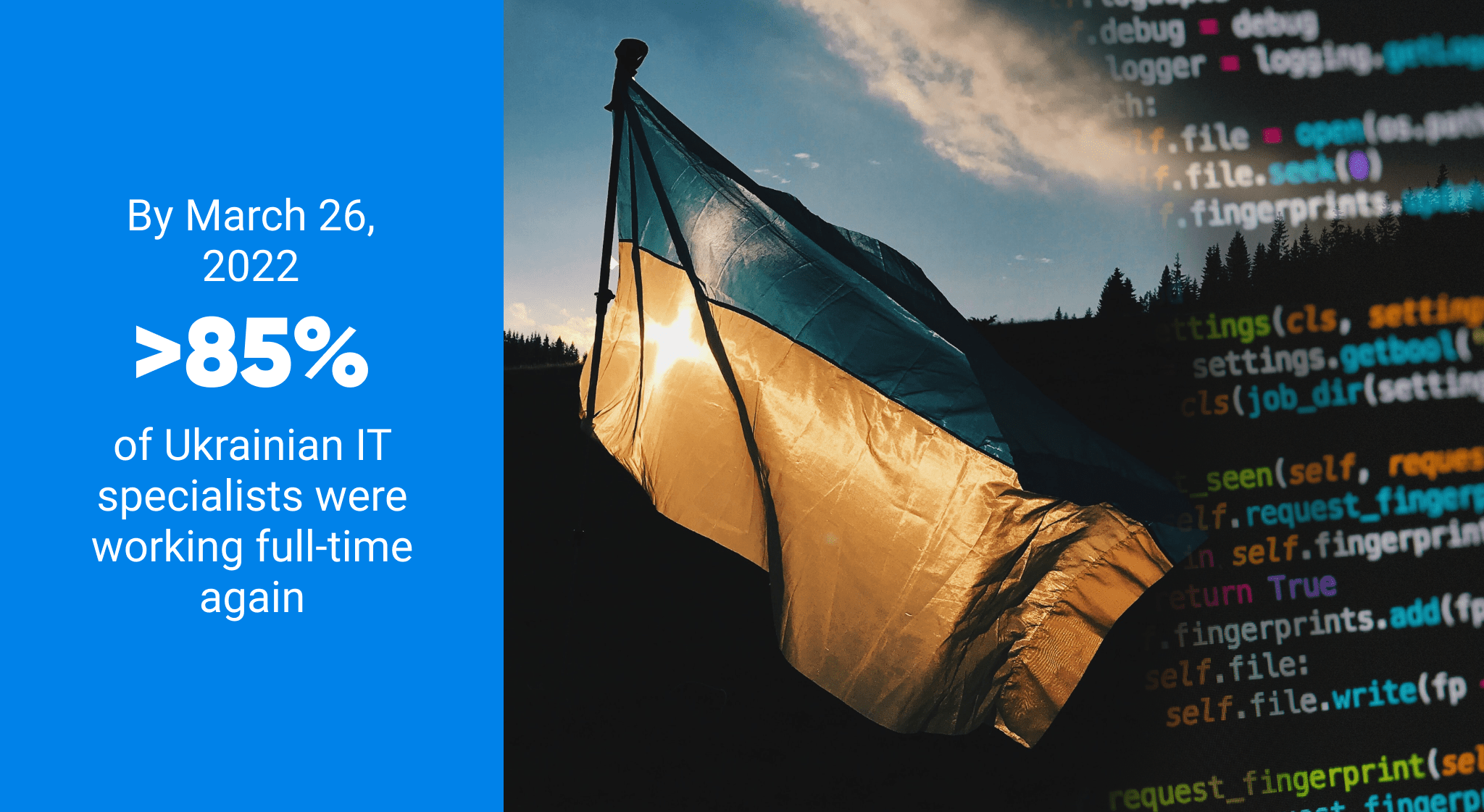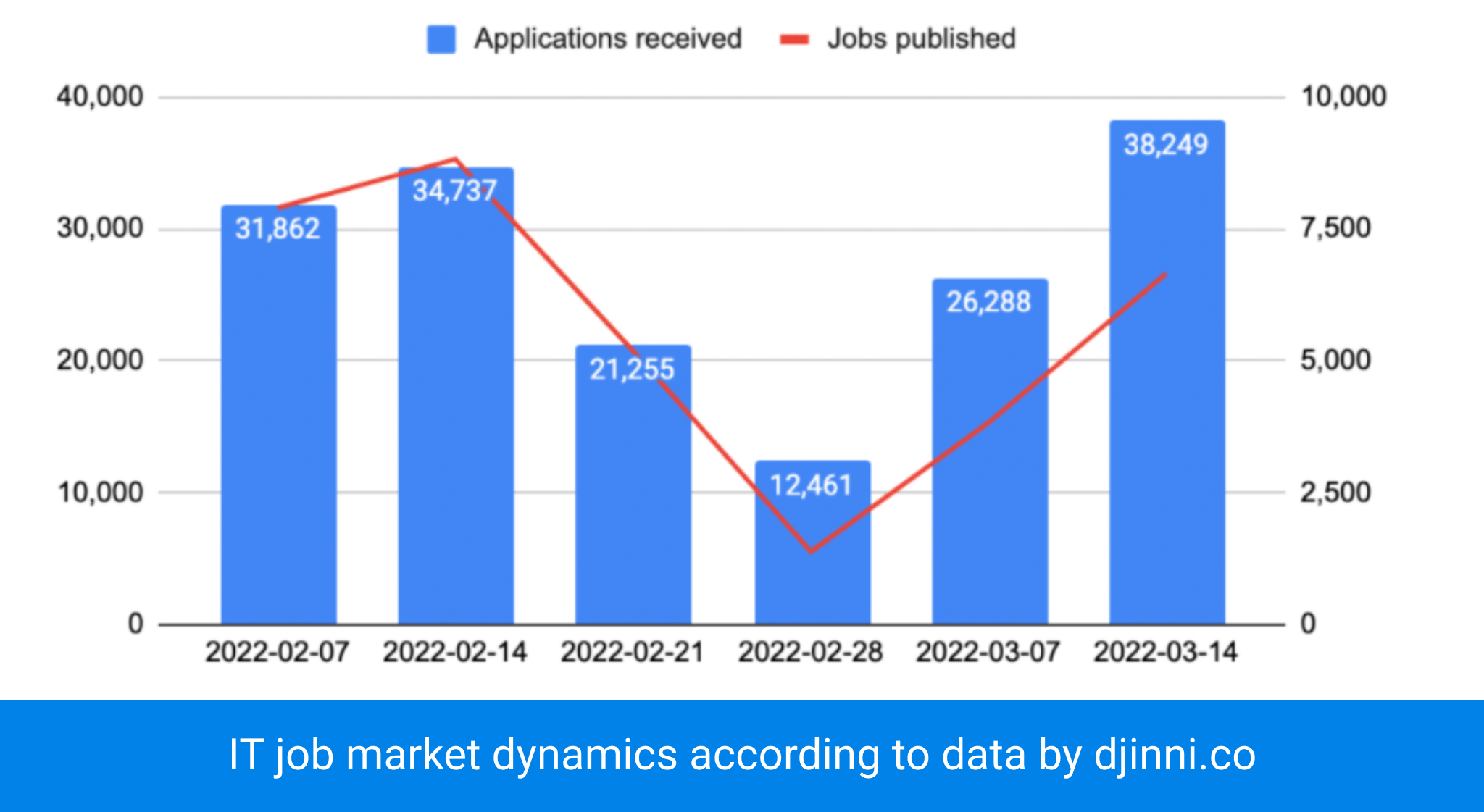
As the first bombs were falling on Ukraine on February 24th, 2022, spelling the beginning of war across the land, the average Ukrainian IT worker grabbed their emergency bag and prepared to move if necessary. Some were enlisting to the armed forces; most were resolved to volunteer alongside their day jobs. After all, the COVID days had taught them all the intricacies of remote work. Days later, software companies were in the process of executing their continuity plans, helping developers, QAs, and everyone else get to pre-calculated safer locations.
While the developers were traveling in heavy traffic, their company boards were busy reassuring anxious customers on video calls. Air raid alerts sounding nearby were working against them, but their confidence showed: they were continuing to work no matter what, because they had more than personal reasons.
As March came, the feelings among partners were mixed: some news outlets were filled with near-apocalyptic predictions of how losing the IT outsourcing powerhouse that is Ukraine was going to cripple the global market. After all, with 300,000 Ukrainian professionals catering for numerous industries, and 20% of Fortune 500 companies enjoying Ukrainian remote developer teams, the fears were reasonable.
And then everyone saw the collapse somehow did not happen. By April, the world saw a striking contrast between the terror happening in multiple regions of Ukraine – and the steady, almost militarily disciplined performance of the country’s software development sector.
This article is about how that happened – and why collaborating with Ukrainian development teams is a good idea even now.
Maybe even especially now.

What is really happening
Business processes
According to data collected by the National Bank of Ukraine (and then republished by Forbes), the Ukrainian export of IT services in Q1 2022 accounted for $2 bln, which is counterintuitively higher than $1.44 bln over the similar period in 2021. In March, the industry managed to retain 96% of its export volume ($522 mln).
According to the IT Ukraine Association, March was also responsible for 38% reduction in revenue for the industry – noticeable indeed but also less significant than the average of 50-60% for other exports. Even more insights and numbers can be found at DOU, Ukraine’s large online IT community.
That being said, outsource IT companies were arguably affected more, while many product-oriented enterprises were simply launching new services, features and entire suites as early as April.
These numbers paint a picture that Ukrainian management can confirm based on their own experience: there was a surge at the start of the year, then a 2-week period of confusion – and a stabilization afterwards, as the customers realized their projects were out of hazard.
The two weeks of business maelstrom were marked mostly by efforts thrown at retaining the existing customers and partners, while also (for some companies) terminating any business ties with companies in russia for obvious reasons – as well as a logistics transition.
Logistics
In its broadest definition, logistics here includes hardware, offices, cybersecurity, physical (re)location, as well as hiring.
- Ever since the beginning of COVID-19 pandemic, Ukrainian IT developed a very clear distinction between the professionals who could work remotely – and those who actually couldn’t. By early February 2022, most companies already had elaborate policies concerning remote work, use of employees’ own devices, and the information security norms that applied. Cozy offices with cookies and recreation zones were kept around for nostalgic and team building reasons, but for all other intents and purposes the typical Ukrainian IT company was ready to function with most of its personnel working remotely without any disruption.
- The physical location of the teams, of course, mattered anyway. In the build-up period that preceded the war, companies were planning relocation plans, with some even contacting real estate agents in the potentially safer areas of Ukraine. According to the martial law regulations in Ukraine, male citizens of drafting age can not leave the country (except for a number of situations), so the companies with better gender balance across departments had a clear advantage. As of now, MWDN (a company based in Kharkiv) has 41% of team members located abroad, while the others are in safer areas inside Ukraine with stable internet and electricity.

It is estimated that the relocation effort (and the partial disruption in work processes it caused) resulted in the industry working at about 80% capacity by the end of March on average. As for MWDN, for example, the company resumed its full operations by the end of week 2. Some of the specialists who either relocated earlier, or did not depend on large amounts of hardware, did not stop their routine at all, except for a day or two. - Hiring rates dropped initially, but then the trend started to revert – first, to compensate for the specialists who joined the Armed Forces (percentage ranging from 2 to 20% across companies). Then, to continue the normal growth of the pre-war era. The turning moment happened in early April; for example, work.ua (a popular job platform) recorded a 17% growth in IT vacancies around that period (from 931 vacancies in late March to 1121). Overall, while the general hiring rates are about 30-40% lower than pre-war on average, with more focus on senior over junior developers, as well as recruiters being even more careful than ever before, the landscape is in equilibrium.

Role of IT in Ukraine
Another important aspect to consider is the role it plays in the country. IT and software development is an important segment of the economy, accounting for 4% of Ukraine’s entire GDP. Before the onset of full-scale war, it was projected to take over 10% in several years, and this still seems quite possible now. IT, as a resilient industry that relies less on logistics than, say, the grain sector, is regarded as one of the most promising areas of the country’s development. It is hoped IT can bring more than $20 bln to the budget over 2022.
This is important because the IT professionals themselves recognize their responsibility as the country’s most vibrant industry and contribute a lion share to the nation’s joint effort at regaining peace. Coders, QAs, UXers, designers, and countless other specialists are busy donating to fundraisers, charities, creating cyber armies and other ways to help.
All this, in turn, motivates Ukrainian teams to work even more than ever before. Software development trends of 2020 you can’t miss . Put simply, it is one thing to work to afford another latte, quite another to work to help save your country. The level of motivation among IT professionals is now higher than one could help to achieve with any corporate benefits.